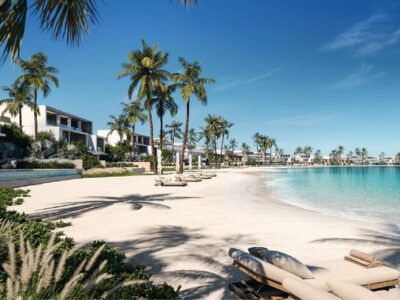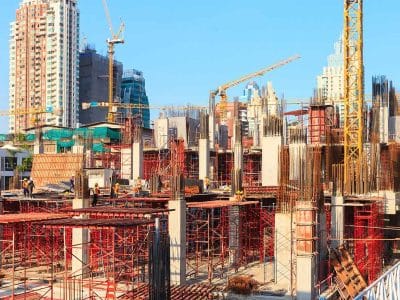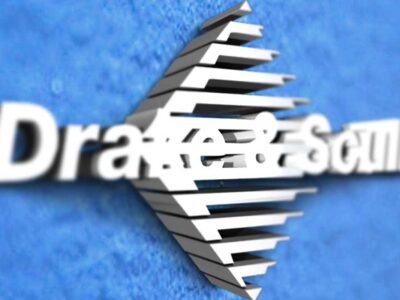The demand for energy for air conditioning is growing quickly in many countries in the Middle East. Nearly 50% of existing power demand in Saudi Arabia comes from the use of air conditioning systems and in the UAE it is estimated that 75-85% of the total power consumption comes from air conditioning during the summer season.
Together with the construction boom in this region, this is putting a strain on the ability of the governments and electricity companies to build new power plants fast enough to meet demand.
To determine the scale of the problem, the Saudi/British Offset Office commissioned a report by ASA Consulting into the current and future demand for electrical power generation in Saudi Arabia. In doing this, ASA Consulting identified that the Saudi Electricity Company is obliged to build extra power stations just to meet the 25% increase in demand for air conditioning during the peak hours between 1200-1700 hours from May to September.
What can be done about this? The obvious answer is to reduce the power used to provide air conditioning. One alternative system on the market makes use of the building’s concrete structure to provide free cooling. This reduces the overall energy needed to produce the same temperature levels within a building (see box: ‘What is Termodeck?’).
ASA Consulting examined various alternative systems including hollow core, building mass thermal storage systems like Termodeck for its report. It concluded that systems such as Termodeck could ensure:
l 50-60% reduction of the installed electrical power for the air conditioning system;
l 20-35% reduced installation costs;
l 40% reduced operating costs
In July 2005, a test was carried out on a building in Riyadh, Saudi Arabia that is air conditioned using a Termodeck installation. The cooling was totally switched off between 1300 and 1700 hours. During the test the temperatures in all rooms in the office except one remained at under 25°C, while the outside temperature at midday was around 44°C.
The occupants were not informed of the system switch off, but reported no change in their working environment. The conclusion of this test together with detailed simulations is that most buildings equipped with Termodeck should be able to reduce the power demand during peak hours by 70-90% compared to conventional air conditioning systems.
The installed cooling capacities (including standby) for some other Termodeck projects in the Middle East have been compared with the design capacities that would have been required from conventional air conditioning systems. The capacities, and therefore electrical power, were found to be 50-60% lower for the Termodeck system (see table 1).
Experience from Termodeck projects in the Middle East demonstrates that the energy consumption is reduced by 30-50% compared to equally sized conventional buildings. This difference is due to the fact that the chillers are running at nights when the ambient temperature is lower; free cooling is achieved by using the outdoor air without any need for compressors during periods when nights are cold. In addition, during very cold periods Termodeck uses the surplus heat stored in the slab during daytime to heat the building at night.
During peak hours, the electrical power used by a Termodeck installation can be up to 70-90% less than with conventional systems. This will substantially reduce the investments in new power plants needed to operate purely during peak hours. TermoDeck International (TDI) has recently received a new patent regarding reduced power demand for air conditioning units during peak hours.
In fact, the ASA Consulting report has estimated that with an extensive use of Termodeck until 2020, the capital costs of power plants in Saudi Arabia alone could be reduced by up to US$8 billion (SR30 billion). The cumulative savings in CO2 emissions would be 18 million tonnes.
Termodeck systems do have high requirements on the building envelope, which can create an additional cost. However, one benefit to the overall building costs is that no false ceilings are required, which reduces the overall building height and one extra floor can be gained for every five to seven floors.
Termodeck is already being used successfully in some projects in the GCC Countries. The Gulf Agency Company Corporate Office in Jebel Ali, Dubai was completed in 2002. Here 300mm deep hollow core slabs of a standard 1.2m width were installed over a single storey. The main consultant for the project was Pax-Kent International. The installed capacity of the air conditioning system here was reduced to 45 tonnes from an estimated 90 tonnes. This meant a huge cost saving.
“TermoDeck gave a guarantee for power consumption to be maximum AED120,000 per year,†explains Kent Johansson of Pax-Kent International. “The real cost turned out to be only AED70,000 including power for light fittings and computers. This is around 50% lower than for conventional air conditioning systems,†he reports.
In the event of a power shutdown the system will keep the building comfortable for at least a full day. This has been put to the test twice since the installation was completed. The building owner reported that the air conditioning system suffered a fan motor failure affecting 50% of its operating capacity in June 2002 and remained inoperative for four days. During this period the air conditioning system continued to provide comfortable working conditions for staff.
A second test for the system’s abilities followed in summer 2005 when a power failure occurred in Dubai during a very hot summer day (40°C); again the system proved effective at keeping the building cool. The cost of the air conditioning system was SR368,000 compared to an estimated SR716,000 for an equivalent conventional system.
“The main obstacle is actually that very few clients understand how Termodeck works and therefore they are sceptical even after visits to Gulf Agency’s Office,†says Johansson.
The system is not limited to the servicing of office spaces. In 2004 an installation was completed in the Lulu Hypermarket, in Muscat, Oman. Two floors are supplied by the system here, covering a total area of 20,000m2.
After more than one complete year of operation, the client has confirmed that it has saved both in capital investments and day to day operations. Bjorn Ostbye, project development manager for the Emke Group confirms: “We have saved approximately $640 000 (AED2,35 million) on investments. The operational costs are around $150,000 (AED 560,000) lower on an annual basis due to 30% less electricity charges and reduced maintenance.â€
Ostbye also reports a reduced cooling load using the system: “We installed 510TR and 170TR standby instead of the normal 950TR plus 340TR standby, and until now we have not required the standby chiller to be started up due to maintenance or additional capacity requirement.â€
What is TermoDeck?
The TermoDeck hvac system is different to conventional technologies as it is integrated with the structure of a building. TermoDeck uses the cores of hollow core concrete floor slabs to distribute air into individual rooms from a main horizontal duct, which is usually situated along a building’s corridor.
With TermoDeck, the whole concrete floor slab is cooled down as the supply air is cooling it from the inside. This means that the concrete can be cooled overnight and it dissipates the surplus heat generated from people, lighting, computers, sun radiation, etc that is stored during daytime. During cold periods this stored heat is used to keep the building warm overnight; the concrete floors thus act as an energy store.
When entering a room, the supply air will never differ from the room temperature by more than a few degrees as it has been cooled or heated by the structural slab. TermoDeck systems are therefore free of draughts as there is no single point of cooling. The slab also acts as a silencer against noise from fans and dampers.
The TermoDeck system runs for longer periods of time than conventional hvac alternatives, and for up to 24 hours a day. The cooling capacity and supply airflow are therefore reduced and are around 50% of conventional air conditioning systems.
TermoDeck has been installed in over 370 projects in Europe, the Middle East and North America covering over 1.5 million m2 and has been proven to reduce the installed power for air conditioning. The first project in Africa is currently being erected.







